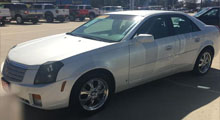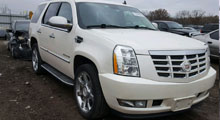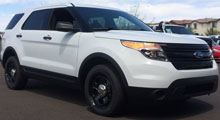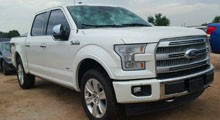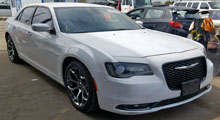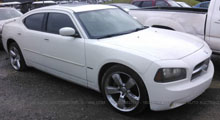Car Maintenance in Winter: A 5-Step Guide
Winter is already around the corner and it is important to be prepared beforehand. Your car is most affected in the chilly weather so it is essential to take a few necessary steps. There is a lot more to it than simply checking the engine oil and the fuel in the tank. More challenges include frost, wear and tear, and the worst of all rust.
If proper maintenance is ignored during the winter season, the engine of your car can be greatly affected. The engine takes longer to start up because of the lack of heat and wears out quicker than usual. Keeping in mind the following tips, you can more prepared to face the harshness of the season. Enjoy the holidays instead of worrying about getting to places.
1. Coolant is Important
Since you have already been using a coolant, it is time to get it checked again. Go for the best version in the market and the best person to ask about it is your mechanic. A good coolant usually lasts a lifetime of the engine but that does not mean it should be ignored. Maintenance of the coolant is also an important step for the virility of the engine.
The basic step is to check the level of your coolant before the season hits. It can be contaminated with water or any other foreign substance. In order to ensure maximum performance, the coolant should be maintained. Commonly, the coolant needs to be a 50/50 mixture of water and antifreeze. This prevents the fluid from freezing in the radiator. You can get a testing kit from any auto parts store to check the mixture.
2. Battery Check
The slow chemical reactions in the battery because of low temperatures slow downtime in generating power. To ensure your car starts up on time on a cold morning, run a battery load test. This will show you how much fluid is present in your battery. Normally, the fluid should reach the top of the cap, if not; you can always fill it with distilled water. You also need to check all the cables and terminals. The harsh winter can cause cracks, which will affect performance.
3. Check the Wipers
You must keep two things in mind when checking the wipers of your vehicle. One: the wiper fluid and two: the wiper blades. Driving in winter is already a challenge. Make sure that your visibility is not as clear as can be by using wiper fluid. Use a freeze-resistant wiper fluid to ensure your windshield is clear from mud, ice, snow, and salt.
Windshields usually need to be replaced every six months or so. When you check their performance, see if they are able to keep the precipitation away from your windshield. If you are changing them nonetheless, go for heavy-duty wipers. They are specially designed for the winters to keep heavy snow away.
4. Have an Emergency Kit
You can never be fully prepared for winter. The weather is harsh and things are bound to go wrong some way or another. The best way to stay out of trouble is to have an emergency kit ready for your use. It is a good idea to have a separate kit in all the cars that your own. The essentials of a good winter emergency car kit includes the following:
· An ice scraper. This will come in handy when you need to remove large chunks of unwanted ice from your car. It comes in handy after a night of heavy snowfall. In case you do not have one, use an old credit card or a piece of hard plastic if you have one lying around the car.
· Replacement Fluids. The engine oil and coolant may need an emergency replacement in the middle of a long highway. Keep a can of each in the kit to ensure you are never stranded in the harsh weather.
· Replacement Waster Fluid. This comes in handy when you are on a long drive. Having an extra can in the car will keep your visibility clear throughout the road trip.
· Heat Pack. Just in case, you need to wait in the car to be rescued. This can alternatively be replaced with a rug or a spare jacket.
· Spare Tire. This should always be in your car no matter the season. The basic tools required to change the tires must be there too.
· Torch. A powerful torch or a head torch will come in handy in the winter nights. Leave this torch in your car nonetheless for all the seasons.
· First-Aid Box. You should have one at all times but keeping on stocked up during winter is a great idea.
Although, this is not an extensive list of things you must have in your car but should get you through a tough time. Add anything else you feel is important depending on your trip and number of people traveling with you. Anything less, you might not feel so confident.
5. Tire Inspection
Tires are a tricky part of winter driving. If the tires of your car are worn out at the treads, you must get them replaced. Their ability to grip the road on ice and snow is compromised greatly. When you get tire replacement, get those that are made of softer rubber. The soft rubber has higher flexibility, which is great for the winter. They also have differently designed treads to keep a better grip on ice and snow.
If you do not want to replace your tires, this cost needs consideration. The least you can do is ensure the tread is 5/32” for winter traction. Another thing to ensure is the inflation of the tires. The cold weather causes the air pressure in the tires to drop drastically. It is important to check the air pressure on a regular basis in winter. It is a good idea to invest in a portable inflatable device; it will come in handy throughout the year.
Driving in ice and snow is challenging but being prepared can get you through the season with ease. No one likes to spend their holidays worrying over their car instead of having fun with the family.
